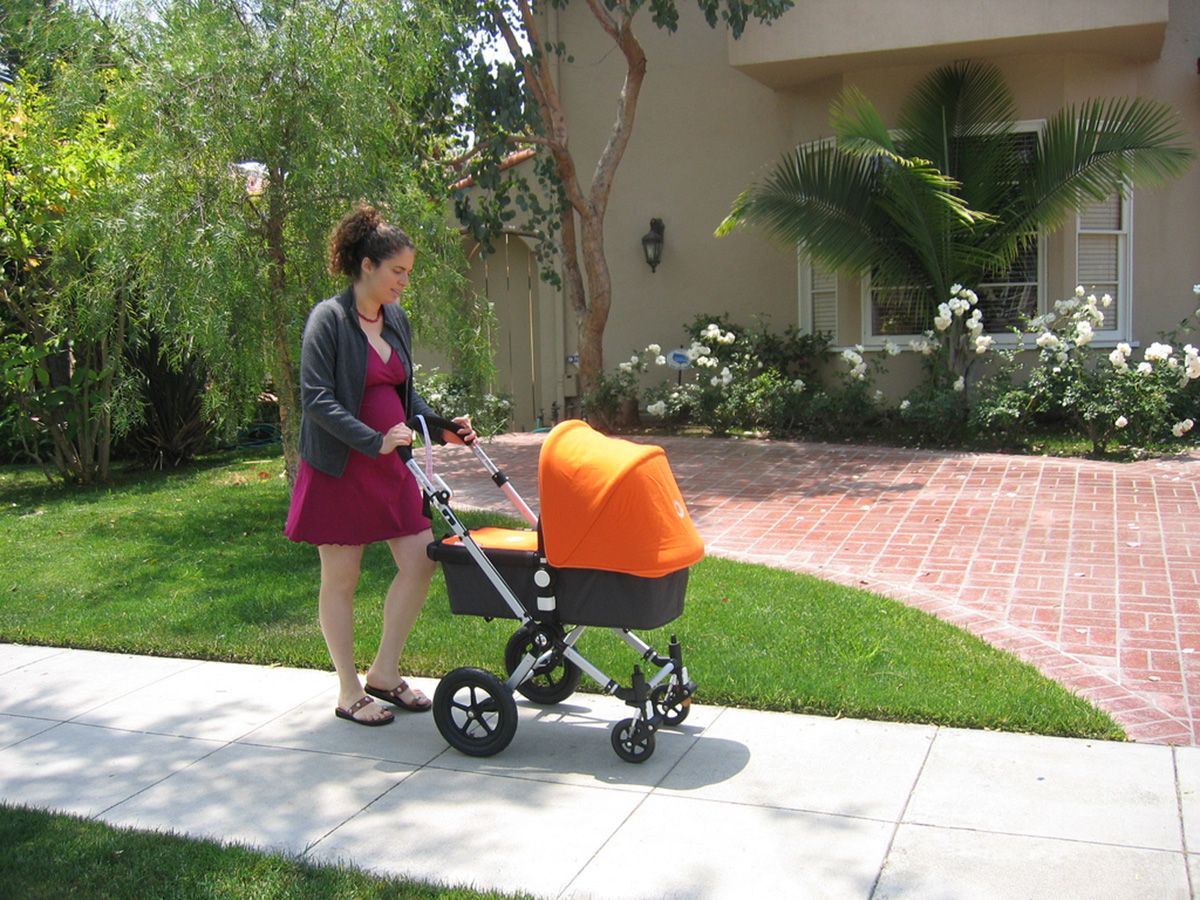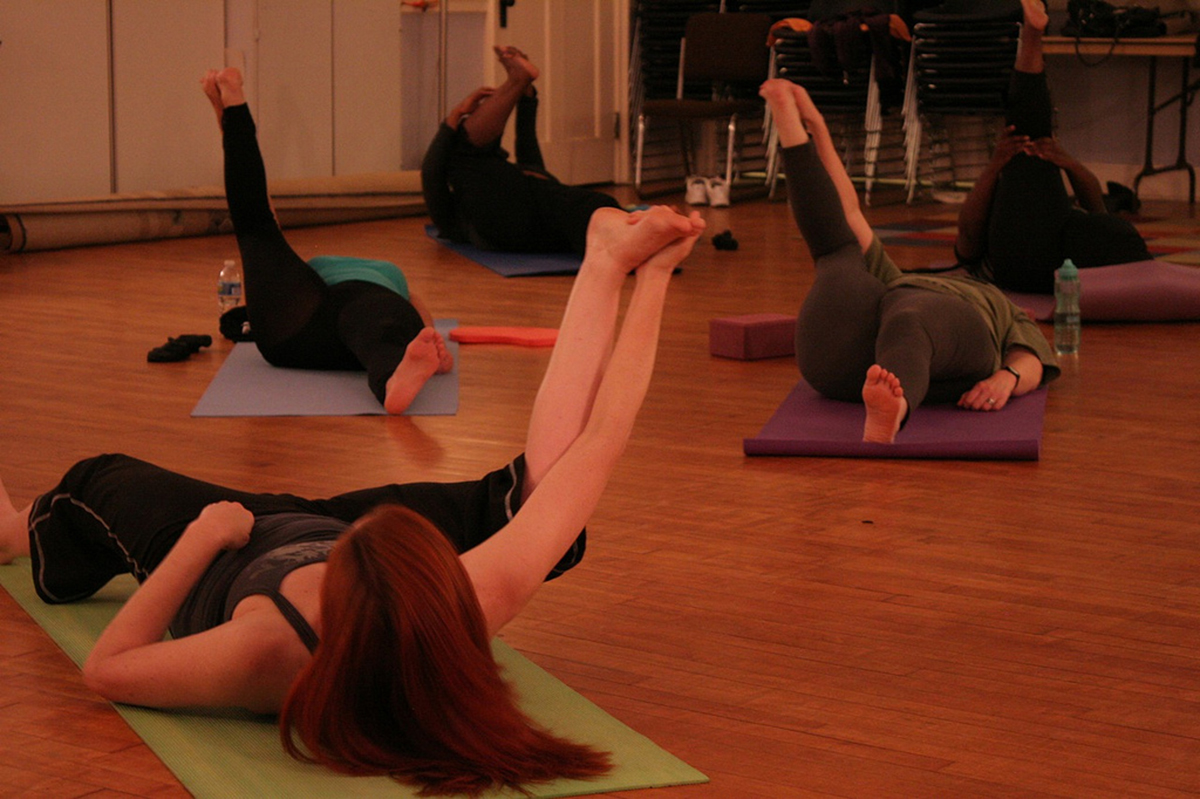Many women are under the impression that exercise soon after birth is dangerous, but if you are feeling well and have had no complications during child birth there is no reason not to engage in gentle exercise as early as two weeks after you've had your baby.

- It improves your mood by releasing endorphins (feel good chemicals),
- Helps your lose weight,
- Protects your from further aches and pains,
- Increases your stamina,
- And gives your more energy (even you are sorely lacking sleep!)
Exercises For The First Six Weeks Postpartum
The most important goal for the first six weeks after birth is to improve strength and rebuild the pelvic floor muscles, because these become weak and damaged. Pelvic floor exercises can be performed gently in the first few weeks after giving birth and even if you have stitches, Kegels shouldn't put any strain on them. Another benefit of these types of exercises is that they will help avoid any accidental urine leaks. Initially it may feel as if you're not actually working anything, but stay with the exercise program because you will soon see the benefits. Try these exercises to help improve the pelvic floor:
1. Gentle walking — This is one of the simplest and most effective exercises you can do as soon as its comfortable. The pelvic floor will feel heavy and swollen, so start with short walks of about 10 minutes (ideally pushing a pram) and gradually increase by a minute every couple of days. Your aim is to be able to complete 20 minutes a day and making this part of your routine is a great way to make sure you do it.
2. Lower Tummy Exercise — Lie on your back with your feet on the floor and knees bent (make sure you are comfortable). The aim is to breathe in. As you release your breath, tighten the pelvic floor muscles. To do this, imagine you are trying to stop yourself from weeing mid-stream or holding in wind. Once you have done this, gently pull the belly button in towards the floor. Your lower tummy muscles should be contracted now and hold this for 10 seconds - without holding your breath - and keep still. Then relax and repeat. If you cannot hit 10 seconds straight away don't panic, hold as long as you can and set a target to complete 10 seconds by the end of the six weeks.
3. Exercise Ball — Once you are able to complete the lying down exercise above, you can move on to exercising while sitting on an exercise ball. Sit on the ball with your feet flat on the floor, squeeze your pelvic floor and tummy muscles as above, and slowly lift one of your legs off of the floor. The aim is to try and maintain a stable position on the ball without wiggling, but keep breathing, hold for five seconds, relax and repeat 5-10 times on each leg.
See Also: Postpartum Problems Every Mom Should Know About
Losing The Baby Fat And Getting Fit: Six Weeks And Onwards
After the first six weeks you should be able to complete more intense exercise, but make sure that you feel comfortable and are not in any pain. If you have any concerns, seek medical advice prior to starting a more difficult exercise program — particularly if you had any complications during childbirth or pregnancy.

1. Yoga or Pilates — These types of exercise are excellent for postpartum women because they build on muscle tone, strength, and flexibility and will also help you make friends! There are so many different classes available and there are even new mom specialist groups which are tailored to improve the pelvic floor region.
2. Swimming — This is a great way to tone up your muscles and lose weight without putting too much stress on the body. The benefit of swimming is that it is non-weight bearing, so if you're still feeling uncomfortable then there is no load or weight bearing feeling such as running would give. Try to swim twice a week for at least 30 minutes as this will give your heart and lungs a good workout too. Although you should make sure you have no leakage or discharge prior to starting a swimming program.
3. Walking — You should have already started walking about quite a bit as how many new mums have time to sit down? But try to include a continuous walk in your daily routine, new babies need plenty of fresh air so try and build up to a 30-40 brisk walk with the push chair to burn calories. The added weight of the pram/pushchair really adds to the workout and the exercise will make you feel great.
What Shouldn't You Do?
The most common question I get asked is what can't I do? Generally speaking after 12 weeks post childbirth you can start to get back to regular exercise. But in the first 6-12 weeks you should avoid running or heavy weight bearing exercise such as aerobics or zumba because you need to give the body a chance to recover from the stress of childbirth. You will start to feel better at about six weeks and want to push yourself but listen to your body because it will be telling you what it needs. Everyone is different so go at your own pace, if you attend classes that are not designed for new mums make sure to make the teacher aware you have recently given birth.
See Also: The Best Way To A Speedy Postpartum Recovery
There is also evidence to suggest that exercise will help lower the risk of postnatal depression because it realizes chemicals that improve mood. But again doing too much can leave you feeling tired and run down so take it easy at the start and work your way back to full exercise gradually.
- Photo courtesy of Tiarescott via Flickr: www.flickr.com/photos/tiarescott/503681477
- Photo courtesy of Synergy by Jasmine via Flickr: www.flickr.com/photos/synergybyjasmine/6808423753
- www.babycentre.co.uk
- www.nhs.gov.uk


Your thoughts on this